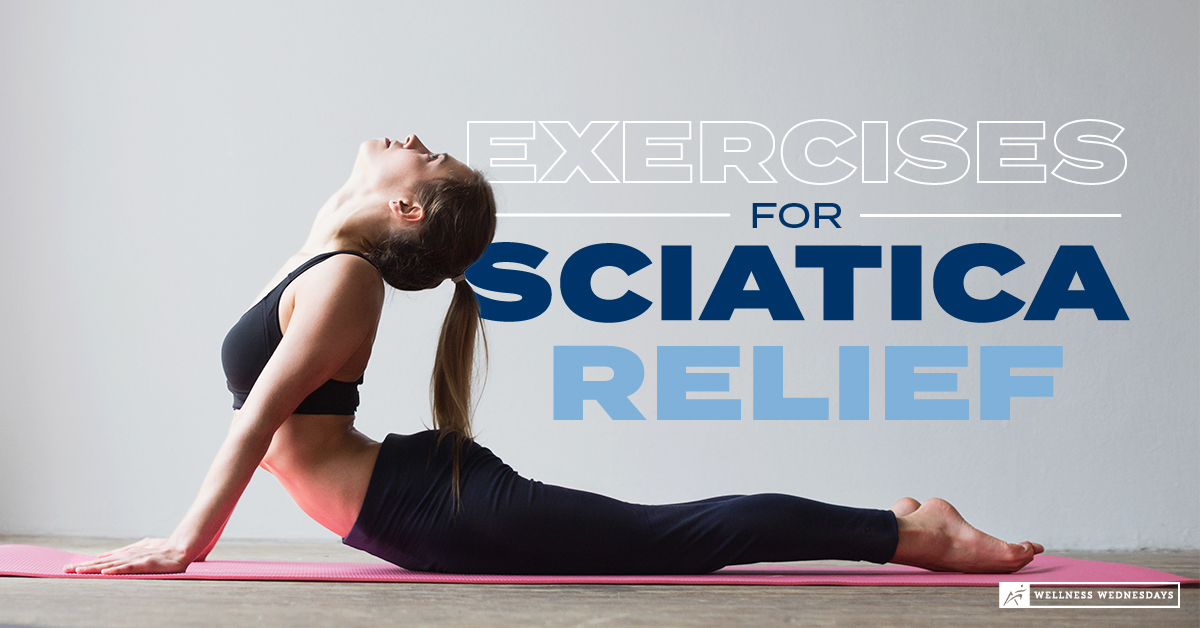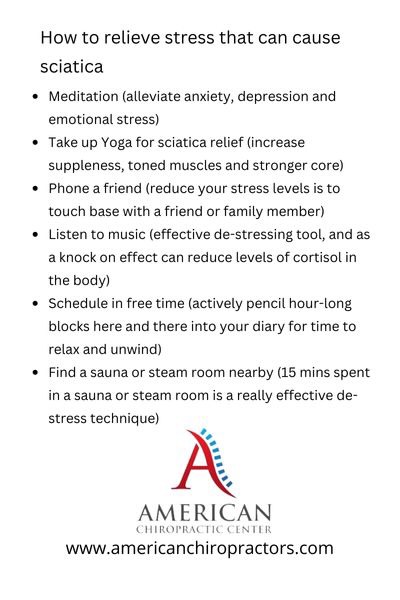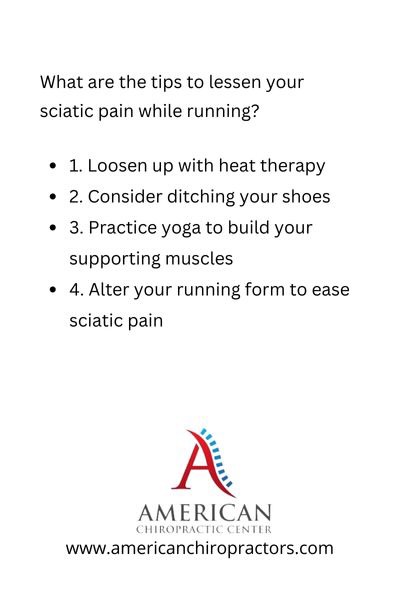Sciatica
Sciatica exercises pictures – Best Exercises For Sciatica Pain Relief

What are the best exercises for sciatica?
The best exercises if you have sciatica pain will help to relieve the lower back pain and leg discomfort. These sciatica exercises will help to relieve the sciatic nerve pressure in the spine:
- Knee to chest stretch
- Standing Hamstring Stretch
- Pelvic Tilt Exercise
- Bird Dog
- The Hip Hinge
- Glute Bridge
- Seated Band Abduction
- Standing Hip Extension
- Clamshell
- Happy Cat/Angry Cat
- Cobra Pose
- Sciatic Nerve Flossing
To read more about how to get rid of sciatica click here
Find relief and stay active with these simple stretches and strength moves.

For up to 40 percent of Americans, at one time or another, sciatica pain becomes a literal pain in the butt due to the sciatic nerve.
A blanket term for any radiating pain that originates from the sciatic nerve—the longest nerve in the body, running from the low back through the buttocks and down the legs—sciatica symptoms occur when the nerve becomes pinched or aggravated.
Two of the most common causes of sciatic nerve pain include herniated discs (the result of bulging in the cushioning between the bones in your spinal column) and narrowing of the lumbar spine (called stenosis), explains Brian Jones, D.P.T., a physical therapist at the Hospital for Special Surgery in New York City.
A tight piriformis muscle or hamstring muscle that squeezes the sciatic nerve just a little too tight is another top culprit. If you’re not familiar with the piriformis, it’s a small muscle that’s tucked away behind the gluteus maximus.
Inactivity or lengthy bouts of sitting, along with obesity and type 2 diabetes, can also contribute to issues anywhere along the sciatic nerve.
Whatever the root cause, if you’ve been diagnosed with sciatica, you know the pain very well: Sometimes, it’s dull and achy. Other times, it’s sharp enough to take your breath away or for your leg to give out.
So it might have you thinking that an exercise program is a no-go for you. Think again. We have exercises that will help.
“Exercises for sciatica pain can treat and relieve sciatica pain,” Jones says. In fact, physical therapy / exercise program for relieving sciatica pain was as effective as surgery at managing sciatica over the long term, according to a 2016 review in the European Spine Journal.
Jones explains that exercise relieve pain by limiting sciatica’s aggravating factors, such as friction or compression between muscles and movement dysfunction. Sciatica exercise also helps people move better around the pain, or despite it.
“The word ‘cure’ may imply changing what is present on an x-ray or MRI, and that’s not possible,” he says. After all, if you have a herniated disc, stretching and strengthening exercises aren’t going to pop it back in place.
“But it is also not necessary,” he continues, explaining that with sciatica, the correlation between imaging and symptoms are pretty loose. So even if that herniated disc is never corrected, you can still radically reduce radiating pain with the right therapeutic exercise to help alleviate the pain due to the sciatic nerve. Check the exercises below.
The Best Stretches and Exercises for Sciatica
As handy as it would be for certain stretches and sciatica exercises to relieving sciatica across the board, the reality is that everyone experiences sciatica differently, and that what helps one person might actually hurt another.
Listen to your body, and don’t try to push through anything that doesn’t feel right for you, Jones says. Exercising through pain will result in worsening symptoms. It’ll also likely throw off your form, which will raise your risk of exercise-related injury.
“Rather than pushing through, it’s important to figure out what motions improve your pain and do more of that, and what motions worsen your pain, so you can temporarily avoid those,” he says.
Over time, after your symptoms subside from doing sciatica exercises, you may be able to gradually add back in those previously irksome movements without pain.
To aid your quest for sciatic nerve pain relief, we asked Jones for his favorite stretches and exercises that most commonly ease sciatica. All or some may work for you. Try them out, performing any winners at least twice per week and as often as every day.
As always, safety is key with sciatica exercises. If you have a chronic condition, an injury, or balance issues, talk to your doctor about how you can exercise safely as we do not provide medical advice.
Exercise #1: Knee to Chest Stretch
Do 3 sets of 10- to 30-second hold per side
How to do it: Lie on a mat with your legs straight or knees bent and feet flat on the floor.
Raise your right knee toward your chest, then gently pull the back of your thigh to draw the knee even loser to your chest. Hold the position for 10 to 30 seconds. Release, switch to other leg, and repeat for a total of three sets per side.
Make it easier: If you have trouble getting onto the floor, you can perform this lying in bed or seated in a chair.
Exercise #2: Standing Hamstring Stretch
Do 3 sets of 10- to 30-second hold per side
How to do it: Place one heel on an elevated surface with your leg straight and ankle flexed. Keeping your back flat, hinge at your hips to lower your chest toward your leg until you feel a comfortable stretch. Hold for 10 to 30 seconds. Switch to other leg and repeat for a total of three sets per side.
Make it easier: You can also do this stretch while seated in a chair. Extend your leg in front of you with your heel on the floor, and hinge from there.
Exercise #3: Pelvic Tilt Exercise
Do 3 sets of 6 to 8 reps
How to do it: Lie on your back with your knees bent and feet flat on the floor.
Flatten your lower back against the floor by tightening your abdominal muscles and bending your pelvis up slightly. Hold your low back to the floor for up to 10 seconds, then release. That’s one rep. Perform three sets of six to eight reps.
Exercise #4: Bird Dog
Do 3 sets of 6 to 8 reps per side
How to do it: Start on all fours with your hands below your shoulders and knees below your hips. Engage your abdominal muscles, keep your spine neutral, and gaze down or slightly forward.
Lift your left arm and extend your right leg until they are in line with the rest of your body.
Pause, then lower back down, and repeat on the opposite side with right arm and left leg extended. That’s one rep. Perform six to eight reps total.
Make it easier: If you have trouble getting onto the floor, you can perform this on a supportive bed.
Exercise #5: The Hip Hinge
Do 3 sets of 10 to 12 reps

How to do it: Stand with your feet hip-width apart, knees slightly bent, and hands on hips. Brace your core—imagine you’re about to get punched in the stomach and tighten those abdominal muscles.
Without changing the position of your knees, bend at your hips and lower your torso until it’s almost parallel to the floor, or as far as you can comfortably go without rounding your lower back.
Pause, then gently pull / lift your torso back to the starting position. Be sure to squeeze your glutes and push your hips forward to lift your torso back to the original position. This ensures you’re engaging your hip muscles instead of relying on your lower back.
That’s one rep. Do three sets of 10 to 12 reps, resting for 30 to 60 seconds between sets.
Exercise #6: Glute Bridge
Do 3 sets of 10 to 12 reps
How to do it: Lie on your back with knees at a 90, feet on the floor about hip-width apart, and heels a few inches away from your buttocks. Press your arms into the floor for support, and brace your core, tighten the abdominal muscles, to minimize the arch in your lower back.
From here, push through your heels and squeeze your glutes to lift your hips up until your body forms a straight line from your knees to shoulders. As you get stronger, focus on getting your shins as close to vertical as you comfortably can at the top of the movement. Pause, then slowly lower your hips to return to start. That’s one rep. Perform three sets of eight to 10 reps, resting for 30 to 60 seconds between sets.
Make it easier: If you have trouble getting onto the floor, you can perform this on a supportive bed.
Exercise #7: Seated Band Abduction
 Do 3 sets of 10 to 12 reps
Do 3 sets of 10 to 12 reps
How to do it: Sit tall in a chair with your feet about shoulder-width apart and an exercise band tied just above your knees so that the band is taut, but not stretched.
Keeping your body stationary, push your knees out against the band as far as you can. Pause, and then release. That’s one rep. Perform three sets of 12 to 15 reps, resting for 30 to 60 seconds between sets.
Exercise #8: Standing Hip Extension
Do 3 sets of 10 to 12 reps per side
How to do it: Stand tall facing a wall or kitchen counter, holding on to it for balance. Keeping your back straight, brace your core, and allow both legs to bend slightly.
From here, lift one leg straight behind you as far as you comfortably can, making sure not to further bend your knee as you do so. Pause, then slowly lower your leg to return to starting position. That’s one rep. Do three sets of 10 to 12 reps per side to help alleviate tightness.
Make it harder: Perform the extensions with a cable machine using very light weight.
Exercise #9: Clamshell
 Do 3 sets of 10 to 12 reps
Do 3 sets of 10 to 12 reps
How to do it: Lie on one side with your legs stacked and bent knees at a 45-degree angle.
From here, keeping your hips steady and your top foot down, lift only your top knee as high as you comfortably can. Your legs should mimic a clam opening. Be sure to keep your abdominal muscles engaged.
Pause, then slowly lower your knee to return to starting position. That’s one rep. Complete all reps, and then repeat on the opposite side.
Make it easier: If you have trouble getting onto the floor, you can perform this lying on a supportive bed.
Make it harder: Perform the clamshell with a small resistance band looped around your knees.
Exercise #10: Happy Cat/Angry Cat
- Start on your hands and knees, on all fours.
- Begin by rounding your shoulders and leaning forward to look at your knees.
- As you round your shoulders further and hollow out your tummy, try to push your shoulder blades apart from each other. As your tummy moves away from the floor, you should notice your lower back rounding.
- Make a 180-degree turn now. Raise your chin and bring your shoulder blades together once more as you arch your back.
- For 30 seconds, alternate between these two positions, making sure the transition is as smooth as possible.
- 2–3 times per day, repeat this exercise
Exercise #11: Cobra Pose
- Begin by lying face down on a firm surface, such as a floor mat or a hard mattress.
- Raise your torso off the floor by gently pushing up with your hands in line with your shoulders.
- Keep your hips on the ground.
- Only extend as far as you feel comfortable – there’s no need to go all the way for a benefit!
- Return to the starting position and repeat for a total of ten repetitions.
- 3–4 times per day, do a set of these.
Exercise #12: Sciatic Nerve Flossing
- Begin by sitting on the edge of a chair or bed, one leg out in front of you.
- This exercise should be done on the LEAST PAINFUL of the two legs. Try both sides and choose the one that is most comfortable for you.
- Pull the toes of the extended leg up towards your head, raise your chin, and look slightly up towards the ceiling. Then, at the same time, drop your toes and chin down.
- For 30 seconds at a time, alternate between these two positions.
- Repeat for three sets, evenly spaced throughout the day.
In Summary:
If you’re looking for a solution to your sciatica pain, it’s important that you find the right exercises for your body. You might be able to find relief with some of these options, or need something else altogether. Listen to what your body tells you when trying new moves, and don’t push yourself through anything that doesn’t feel good. It’ll take time to figure out what works best for you (and patience!), but in the end it will all be worth it! Get started on your exercises today.
Chiropractic care is great to help alleviate Sciatica pain. Find a chiropractor for chiropractic care that can help with wellness care to help the spine related underlying cause for why you are treating sciatica. We hope these exercises/ treatments for sciatica will help relieve your pain as sciatica causes will be alleviated as you increase range of motion through exercise and stretching. Always consult a doctor to provide medical advice.

Doctor Osvaldo Pepa, Neurosurgery Service Physician at Hospital San Martin, La Plata, Argentina. I graduated last November 16, 1984 with a Medical Degree at the Universidad Nacional de La Plata. The Medical Board of La Plata, District 1, licensed me as a Neurosurgeon in 1990. I hold a Provincial and National License and an active member of the Neurosurgery Society of La Plata, World Ozone Therapy Federation, and Inter American Society of Minimally Invasive Surgery.






















